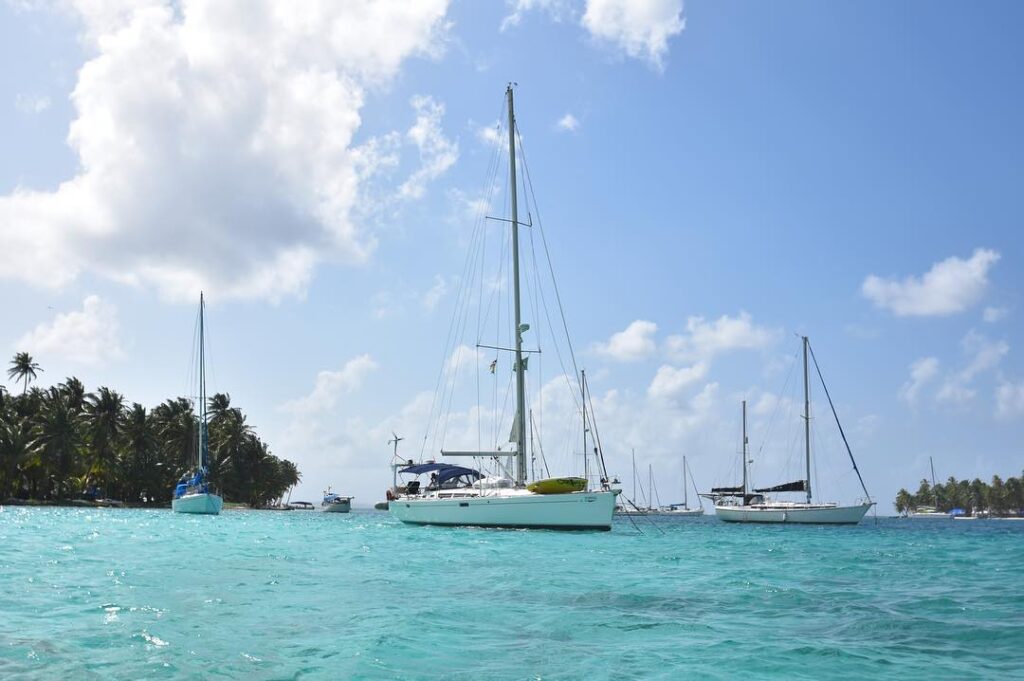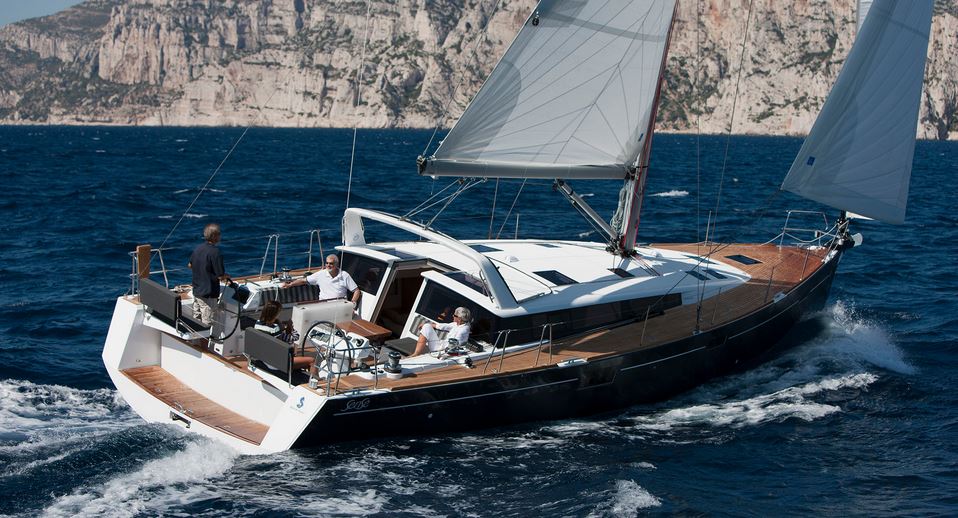Sailboat Depreciation Rate: Everything You Need to Know
Some people purchase items such as a home and want to live there indefinitely. However, we don’t retain many other products for nearly as long. You might even consider trading in your smartphone when a new one is released. While you’ll retain your sailboat for a longer period of time than you would a phone, it may not last indefinitely. You may have outgrown the boat or discovered it isn’t your style. For example, you didn’t realize how much you wanted a pontoon boat until you had one. Then you changed your mind and wanted something else. It occurs!
It’s critical to understand your boat’s depreciation rate regardless of why you want to sell it. This will tell you how valuable your boat is now. Also, you will be aware of how much it will lose in value if you keep it for a few more years before selling it. So, if you want to learn more, in this article, I’m going to give you some details about a sailboat’s depreciation rate. Follow me!
What is Boat Depreciation?
It’s never easy to predict depreciation, especially in a market where there isn’t a lot of data. The figures will also vary depending on the boat’s type and age. As a general rule, new vessels lose 40-50 percent of their initial cost in the first 8-10 years, with half of that amount loaded in the first two or three years. Once a boat is ten years old, depreciation usually slows to less than 5% each year.
The hull and construction of an older vessel — one that is more than 25 years old – may have experienced comparatively minimal degradation. Onboard systems and equipment, on the other hand, will account for a large amount of the total value. And this applies especially to today’s expectations as demands are more complex than in the past. The age and condition of these items have a substantial impact on the boat’s value. But, you’ll only ever recoup a portion of the money you spent on new gear and equipment when you sell it.
In general, batteries, electronics, canvas, cruising sails, and standing rigging have to be replaced every five years. Upholstery, fridges, and other domestic equipment, including generators, are replaced every 15 years. Also, engines are replaced every 25 years. This usually results in a low budget – unless you’re unfortunate, these products will last much longer with regular maintenance. But, it does leave some money in the bank for unexpected expenses.
Let’s better understand this subject by observing some main calculations related to accounting:
- The sum of the year’s digits: This is calculated by first determining the boat’s cost. Then, by evaluating the boat’s usable life and how much it is worth at the end of that life. The annual depreciation is then calculated using a formula.
- Straight-line depreciation: This form of depreciation calculation is done by first calculating the boat’s cost. Then by estimating its useful life (in years) and what it would be worth at the end of that life if you tried to sell it.
- Declining balance depreciation: With this method, you enter the cost of the boat. After, you enter the useful life and a rate at which you’d feel comfortable depreciating the boat year for declining balance depreciation.

>>Also Read: Insuring an Old Boat: Best Ways to Insure an Old Boat
Appreciation – Depreciation: What’s the Difference?
Let’s start with the distinction between appreciation and depreciation to get things started. The worth of a product you buy, whether it’s a computer, a car, a house, or a boat, will naturally alter over time. The value increases in certain circumstances and lowers in others. Appreciation is the increase in value, while depreciation is the decrease in value.
There are numerous items that can increase in value over time. Some currencies (including cryptocurrencies), copper, gold, and equities are among them. If you don’t have any of those, you probably do have something that appreciates: your home! Yes, both houses and apartments are becoming more valuable. While there are exceptions, you can anticipate being able to sell your property for more than you paid for it in the future.
Many other everyday items degrade. These can be cars, iPhones, and laptops, for example, they all lose value with time. That’s because there’s always another one on the horizon. A 2021 car may be valuable now, but after the 2022s, this car will eventually lose its value. Also, the value of a vehicle might drop by as much as 20% in a single year. It’s the same thing with smartphones. Meaning that the most expensive iPhone is the one that is the most recent. Of course, until it is no longer the most recent. This holds true for video gaming consoles, PCs, and many other electronic devices.
So, what about boats? Sailboats depreciate from the moment you buy them and for the rest of their lives. In order to understand this better, I will give you some examples of popular boats. Like this, you will be able to see how their depreciation rate is calculated.
Examples of Depreciation of Common Sailboats
Bavaria C50
The Bavaria C50 is a sailing yacht with up to six cabins, a 16-foot-four-inch beam, and a 52-foot-one-inch overall length. It costs $519,000, which is somewhat less than the Beneteau Oceanis 55 Series which we will see down below. The boat is currently priced at around $473,00 when it lowers to 91 percent of its original value after three years. Five years later, the C50 is worth around $442,000, having dropped to 85 percent of its original value. So, for example, if you maintain the Bavaria C50 for ten years, it will be worth around $379,000 at that time.
Beneteau Oceanis 55S
If you buy a new Beneteau Oceanis 55 Series, it will set you back $550,000. But, note that its worth would plummet by $16,667 after three years. This sailboat would be worth about $465,000 in five years if you kept it, as it is just 85% of its original value. What if you invested in the Oceanis 55 Series for ten years? The losses are more severe, amounting to nearly $15,000 over a ten-year period. This implies that the boat is now worth $400,000. So, is it still a prestigious sailboat with a high market value? Yes, but not quite as much as you paid for it.
Nautor’s Swan 65
The Nautor’s Swan 65 is a 65-foot-long Finnish sailboat and is worth $571,743 when buying it brand new. Three years later, the price has dropped to around $521,000, or 91 percent of its original worth. After five years, the value has dropped to around $486,000, which is a significant loss. Again, by maintaining this boat for a longer period of time, such as ten years, the value has increased to $417,372.39. That’s a bigger hit, yet it’s just for five more years.

>>Also Read: How Much Does It Cost to Own a Boat?
Depreciation Over a Used Boat
Note that the cost of a used boat is quite similar to the cost of a new boat of the same type. And, boats, like everything else with an engine, lose value over time. In different market places, different models depreciate at varying rates. To give an example, a new boat depreciates fifteen to twenty-five percent in its first year, then less each year until it is worth roughly half its replacement cost in the sixth to eighth year.
In addition, sailboats will deteriorate at a decreasing annual rate until they are around 10 to 12 years old. Condition, upkeep, build quality, and model appeal will begin to have a greater impact on market valuation as they reach that age. Note that the localized market appeal in terms of brand and model is a significant element in resale pricing. Not to mention the expected purchasing period. It’s important to keep this in mind when considering buying a new or used boat. Because knowing your local market can help you find the boats you want.
Another important aspect about used sailboats is that there are no warranties unless there are exceptional circumstances. The hull and deck, floors, and bulkheads are covered by the original manufacturer’s structural guarantee for five to ten years, and in some cases even a lifetime, for the original purchaser. Upholstery and seating will also be covered by one to five-year warranties. Plus, if it’s a fiberglass boat, there’s normally a five- to ten-year hull bottom blister or osmosis warranty. Parts of these warranties are often transferable to a second owner for the remainder of the original term. However, this is not always the case. So, before signing on the dotted line, double-check the warranty status.
So, let’s clarify this better. You may buy a 1 to 5-year-old boat and get the remaining structural and engine warranty from a new boat. However, you should double-check with both the dealer and the manufacturer, as there may be discrepancies between the two. If a warranty is available, then insert a condition in the purchase contract to cover it. Also, check to see if the information provided by the manufacturer and the dealer is identical.
As previously stated, maintenance and condition are vital to a boat’s worth as it ages, and this is especially true between the ten and twelve years mark. Boats live in one of the harshest environments imaginable, with constant exposure to water and dampness, as well as wildly varying temperatures. In harsh climates, where water and moisture can freeze in the winter, this environment is magnified.
How Fast Does an Average Boat Depreciate?
When you make a large purchase, such as a new or gently used boat, you want to know how your money will hold up over time. While there are general rules of thumb for vehicle depreciation in the automotive world, boats are a little more difficult to anticipate because owners tend to take more responsibility for upkeep. They also come with additional gear, and the market isn’t as large. So, it can be tough to make definitive predictions about boat depreciation because of these and other circumstances.
On average, a new boat is predicted to depreciate for 7 to 10 years after purchase. After ten years, you may expect your yacht to be worth $100 for every foot of length. This estimate is based on normal wear and tear, as well as the absence of any unique equipment or upgrades that would increase the boat’s worth. Of course, if you keep your boat in top shape, upgrade and maintain parts, and additional gear, you’ll probably ask for more than the estimate given above.
It’s worth mentioning that pontoon boats and fishing boats, in general, degrade faster than many other boats, with the resale value reducing by roughly 25%-30% during the first year or two of ownership. Sailboats and yachts, on the other hand, depreciate more slowly and preserve roughly 90% of their worth after three years of ownership. While no one wants their boat’s value to degrade over time, paying attention to wear and tear can help it last much longer and preserve its value.

>>Also Read: Are Sailboats Expensive to Maintain? Average Sailboat Maintenance Costs
Ways to Limit Depreciation on a Sailboat
Okay, so sailboats deteriorate at a far slower rate than many other types of boats. That’s useful information, but it doesn’t change the reality that your sailboat is rapidly depreciating. Is there anything you can do to stop time and keep your boat from deteriorating? Yes, without a doubt! Some of these solutions are more acceptable than others, but they all work to slow down the rate of depreciation.
- Try to limit the usage of your boat: As we previously stated, some of these depreciation-halting tactics are a bit excessive, and this is one of them. Meaning that the more you use your sailboat, the worse it will get overtime. This is because of the normal wear and tear that comes with boating. The sailboat’s worth will be preserved to some extent if it is never used. Your sailboat’s creation year is becoming more a distant memory, so even if it’s in excellent shape, it won’t be as desirable as a newer boat from the same company.
- Wax the boat: That is why mariners advise that maintenance is the most important factor in preventing your boat from degrading too quickly. So, make sure you polish your boat regularly. But, is this the most cost-effective or quickest option? Of course not, but washing and polishing the boat will help to keep it in good shape. When it comes to depreciation, this is critical.
- Be aware of the filters: Your sailboat must perform as well as it appears. For that purpose, you should inspect the gasoline filters around once a month. If yours are reusable, you might be able to clean them and reinstall them. Bear in mind that single-use filters should not be overworked because they are only designed to last a certain amount of time.
- Store the boat in a secure place: The moment you open your smartphone and take it out of the box, it begins to depreciate. Sailboats are the same way, in that their worth plummets just getting from the warehouse to your destination, whether it’s a dock, marina, or even your garage. So, in this case, you have to think about where you’re going to keep your boat. While you won’t be able to avoid the depreciation that will occur if you leave it, you can store it in a secure location to keep it in new condition. Depreciation may be slowed slightly as a result of this.
- Replace the oil: You keep track of your car’s oil changes, but what about your sailboat? Your sailboat also needs new oil every 50 to 100 hours on the sea. Find your owner’s manual if you’re not sure how long you should go between oil changes. This information should be included in there. Oil replacements should become a regular part of your maintenance tasks, regardless of whether your sailboat’s engine operates on diesel or gasoline.
- Clean the pumps: You should clean your sailboat inside and out once a month, if not more frequently. The less you have to worry about objects blocking your boat, the more immaculate the parts are. If you have to continuously repair or even replacing some problematic components, the depreciation of your sailboat accelerates even further.
Sailboat Depreciation Rate – The Bottom Line
Keep in mind that a boat that is reasonably priced will attract more customers than one that is overpriced. However, you must also ensure that you make a profit out of it. In other words, you may be sure you’re not overcharging but still making money if you know your boat’s predicted depreciation rate. That’s a difficult calculation to make. This is because a boat that cost $600,000 20 years ago in a specific country now costs around $700,000. But, but it’s a much nicer boat with much different equipment. In addition, replacement is a difficult call because, in most cases, a new boat from the same manufacturer in the same size will be a significant upgrade. After leaving the factory, the typical cruising boat receives numerous upgrades and equipment additions. It’s basically a resale item.
A boat’s resale value is influenced to a large extent by how well it is equipped and maintained. The value of two factory boats of the same model that are both ten years old can easily differ by 50%. However, the pricing is never truly stable. Although depreciation for an older boat might be slowed if it is well maintained, a 1971 Columbia 34 is still a 1971 sailboat that is becoming older every year.
According to the figures, some boats are better off being purchased used, while others are better off being purchased new. Or, at the very least, some new boats will not depreciate as much as others. You can’t predict how a boat will depreciate in general unless you know what type of boat you want to purchase. The materials used on the boat and the cost of a new boat have an impact on the depreciation rate as well. There are a lot of variables at play here. Also, it appears that in some circumstances, you’d be better off selling at specific times of the year. But, this will need extensive research or hiring a professional.
In any case, I hope that with this article you now have a better knowledge of the subject of a sailboat’s depreciation. I believe that you will be able to calculate, or at least understand, how the calculations occur and what matters most when referring to the depreciation of a sailboat. Wish you good luck in your purchase, research, or selling!
